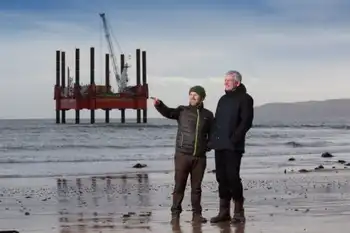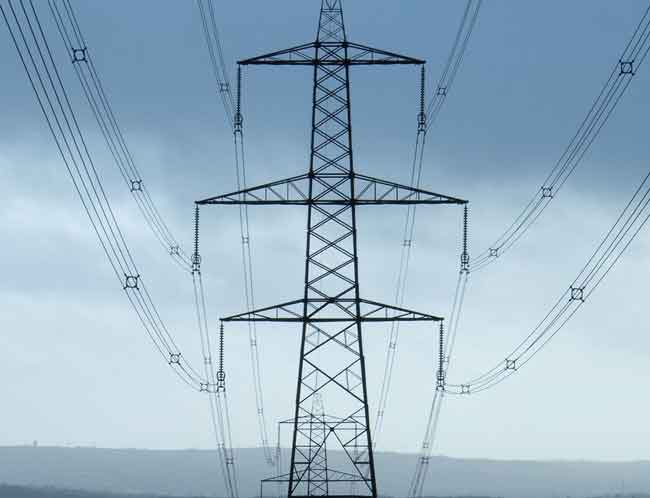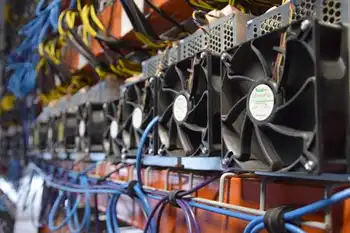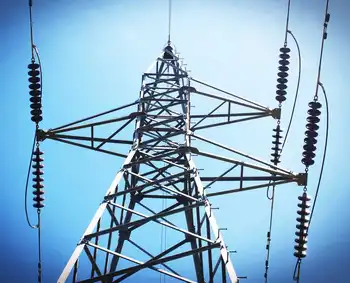NV Energy postponing big coal-fired plant near Ely
By Associated Press
NFPA 70b Training - Electrical Maintenance
Our customized live online or in‑person group training can be delivered to your staff at your location.

- Live Online
- 12 hours Instructor-led
- Group Training Available
NV Energy Inc.'s $5 billion coal-fired Ely Energy Center in White Pine County could be delayed for up to a decade, or until technologies are developed to burn coal with fewer emissions or store carbon byproducts, company president and chief executive Michael Yackira said.
"Now is not the time to take an economic risk for either our customers or our shareholders," Yackira said. He said there were too many uncertainties in building a coal plant without knowing what the technologies will cost.
Environmentalists and some politicians, including U.S. Senate Majority Leader Harry Reid, D-Nev., have opposed the 1,500-megawatt plant because they said it would increase air pollution and contribute to global warming.
Environmental groups hailed news of the postponement. The Nevada Conservation League said delaying the coal plant would protect people from mercury, arsenic and lead.
Tim Hay, a Natural Resources Defense Council consultant and former Nevada consumer advocate said he hoped it signaled a move toward protecting consumers from "the increasing cost of fossil-fuel generation."
Yackira said such opposition had led to delays in obtaining permits for the Ely project, which was first announced in January 2006.
"Times have changed drastically in many ways — economically, politically and environmentally," he said.
NV Energy will continue planning a 250-mile transmission line from Ely to Clark County that would finally link the utility's two subsidiaries, Las Vegas-based Nevada Power Co. and Reno-based Sierra Pacific Power Co., Yackira said.
The company will ask the state's Public Utilities Commission to consider the $600 million transmission line separately from the Ely project. Yackira said the company hopes to have the transmission line operating by 2012.
Opponents of the NV Energy coal plant have said they would support letting the utility build the power lines if they helped move energy produced by geothermal, solar and wind power.
NV Energy's power plant proposal trailed a plan by another company, New Jersey-based LS Power Group, which wants to build a 1,600-megawatt coal-fired power generating complex in the same area near Ely, about 50 miles west of the Utah state line. One megawatt provides enough electricity for 225 to 750 households, depending on seasonal demands.
That proposal also has drawn opposition from environmental groups, while Rep. Dean Heller, R-Nev., has urged Gov. Jim Gibbons to let it move ahead.
LS Power official Mark Milburn said his company's more than $3 billion White Pine Energy Station project still needs a state air quality permit and PUC approval. It could open in 2014.
LS Power has agreed with state officials to retrofit the plant if "economically viable" technology emerges to capture and store carbon emissions, Milburn said.
Yackira insisted NV Energy was not pulling the plug on its Ely project, but said the company has taken other steps to ensure electricity supply for its 2.4 million customers. NV Energy started building a 500-megawatt power plant and recently purchased a 598-megawatt plant, both near Las Vegas, and completed a 541-megawatt generating plant east of Reno. All three burn natural gas.
NV Energy also has begun investing in renewable energy projects, he said.
Delaying the Ely power plant will not have an effect on a rate increase that state regulators are due to consider in April, he said.
NV Energy shares closed at $10.75, down 16 cents or 1.5 percent.
The postponement of the power plant proposal came days after a federal Bureau of Land Management hearing in Reno at which opponents said they feared it would foul the air and proponents said it would bring desperately needed construction jobs.
BLM spokesman Chris Hanefend in Ely said hearings on the NV Energy proposal will allow people can comment on the transmission line.











